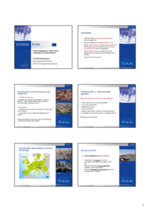Light-weight bus shuttle
Summary
Porto fostered a modal shift between transport modes to reduce greenhouse gas emissions through the introduction of a light-weight bus shuttle.
Implementing sustainable mobility
More efficient engines and lighter vehicles decrease fuel consumption, which can bring significant reductions in emissions from transport that accounts for 28 percent of CO₂ emissions in Europe. This is the main reason why Porto performed an operational test of a new light-weight bus based on innovative manufacturing technology.
The main objectives of the measure were to:
- Reduce the weight and production costs of urban buses through new bus construction technology;
- Reduce CO₂ emissions;
- Promote a modal shift towards cleaner modes of transport.
Porto developed a prototype, which was tested in the Asprela area. The bus is prepared to be powered by biodiesel fuel. Composite materials reinforced by light-weight fibre grant high static and dynamic performance.
Progress
Porto has carried out research and worked on the technical development of the light-weight hybrid bus prototype. This involved an analysis of all materials, the design of particular functions and the provision of a safe design technology for joining composite materials and metal inserts. A puritan composite body was manufactured, using the Vacuum Infusion of resin as the technological process. The prototype was launched on the Asprela area and carried passengers during 12 weeks, between February and May 2012. During the operational phase, several tests were performed and data was collected to understand the effects produced by the weight reduction on the exhaust gases emissions.
Outcomes
Porto achieved the following results on this measure:
- Composite bus bodywork, 380 kg (16%) lighter than the original;
- Just two bonded parts composing the main structure;
- At the structural level, there are no metallic elements in the bodywork constitution, which is a self-supporting structure;
- Urban Vehicle: up to 44 passengers (according the European regulations), including 1 wheelchair place and driver;
- CO2 emission reduction between 7 and 36 %, due to the weight reduction, depending of the tests conditions;
- More than 14.000 passengers carried;
- 27% of new public transportation users due to the CiViTAS bus shuttle service.









